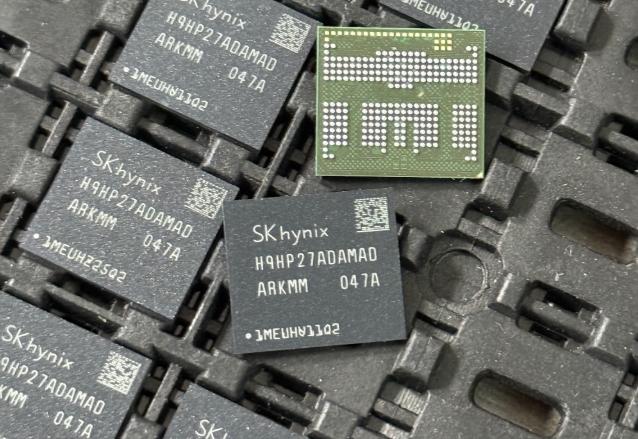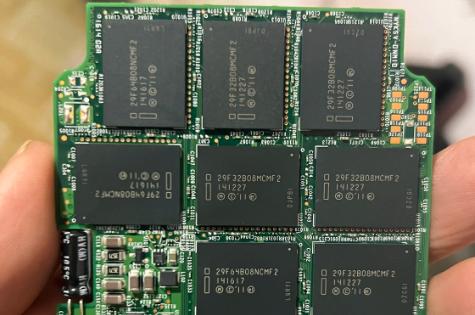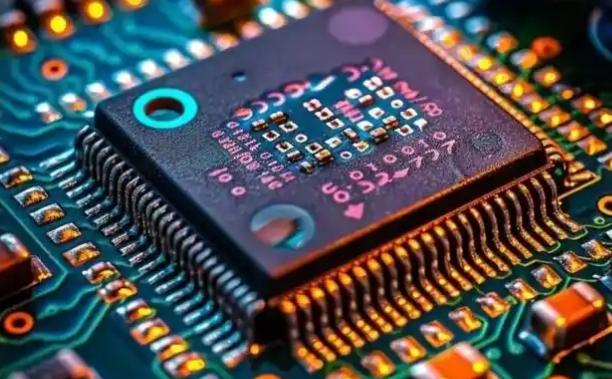Hello! now About Us
In-Depth Analysis of the Working Principle of Motor NF123G-305
6/20/2025 2:18:25 AM
Motors, as the core power sources in modern industrial and civilian applications, have always evolved in tandem with advancements in electromagnetic theory and materials science. Taking the NF123G-305 motor as an example, its working principle integrates classical electromagnetic induction laws with contemporary motor design concepts. This article will provide a technical analysis from three perspectives: the mechanism of electromagnetic conversion, the collaboration of structural components, and control strategies.
1. Core Mechanism of Electromagnetic Conversion
The NF123G-305 motor adopts a three-phase asynchronous motor architecture, with its core principle based on the interaction between a rotating magnetic field and conductor currents. When three-phase alternating current is applied to the stator windings, a rotating magnetic field with constant amplitude and speed is generated in the air gap.
As the squirrel-cage conductors in the rotor cut through the rotating magnetic field, an induced electromotive force is generated in the conductors according to Faraday's law of electromagnetic induction, subsequently producing induced currents. These current-carrying conductors experience Ampère's force in the magnetic field, generating electromagnetic torque that drives the rotor to rotate.
This asynchronous characteristic enables the motor to generate significant starting torque while allowing for wide-range speed regulation by adjusting the power supply frequency. For instance, when the power supply frequency is reduced from 50 Hz to 25 Hz, the synchronous speed decreases by 50%, and the rotor speed adjusts accordingly to meet varying load demands.
2. Synergistic Action of Structural Components
The structural design of the NF123G-305 motor fully embodies the principles of functional integration and reliability. The stator assembly consists of a core made of high-permeability silicon steel laminations and distributed windings. The windings are connected in either star or delta configuration to ensure the symmetry of the three-phase magnetic field. The frame, constructed from cast aluminum, features cooling fins on its surface and a four-way outlet design on the top terminal box, meeting the IP44 protection rating requirements while facilitating on-site installation.
The rotor assembly employs a squirrel-cage structure, with aluminum bars embedded in the rotor core slots and connected at both ends by short-circuiting rings. This structure eliminates the need for brushes and commutators, significantly reducing maintenance costs. The end covers incorporate a small flange structure (IMB34 mounting type), and the shaft extension end is supported by deep groove ball bearings to ensure rotational accuracy. The cooling system utilizes the IC0141 self-fan cooling method, where a rotor fan rotates with the shaft to generate forced air cooling, which, combined with the frame's cooling fins, keeps the motor temperature rise within the E-class insulation limit during continuous duty operation.
3. Intelligent Evolution of Control Strategies
Modern motor control technologies have endowed the NF123G-305 motor with greater flexibility. By adjusting the power supply frequency and voltage through a frequency inverter, constant V/f control or vector control can be achieved. For example, in vector control mode, the stator current is decomposed into torque and excitation components, and coordinate transformation is employed to achieve decoupling control, enhancing the motor's dynamic response speed by over 30%.
For applications requiring precise positioning, an incremental encoder can be configured to form a closed-loop system. The encoder's output pulse signals are processed by the controller, which adjusts the motor speed and position through PWM modulation. Additionally, the motor incorporates thermistors for temperature monitoring. When the winding temperature exceeds 155°C, the thermal protection device automatically cuts off the power supply to prevent insulation damage.
4. Technical Parameters and Industrial Applications
The NF123G-305 motor has a rated power range of 0.75-7.5 kW, a rated speed of 2800-1400 rpm, and a locked-rotor torque of 2.2 times the rated torque. Its energy efficiency level meets the IE3 standard specified in IEC 60034-30-1, offering a 3-5% efficiency improvement over traditional motors. In fan and pump applications, frequency regulation can achieve energy savings of 20-40%.
This motor model has been widely applied in industrial automation production lines, HVAC systems, and logistics conveying equipment. For instance, in a stamping workshop of an automotive manufacturing enterprise, the feeding mechanism driven by the NF123G-305 motor achieved a response time reduction to 0.2 seconds through frequency regulation, resulting in a 15% increase in production efficiency.
5. Technological Evolution and Future Trends
With the development of permanent magnet materials and power electronics technologies, motor design is evolving towards higher power density and intelligence. In the future, the NF123G series may integrate wireless communication modules to enable condition monitoring and predictive maintenance. Additionally, the adoption of brushless DC motor technology with Halbach array permanent magnets is expected to further enhance motor efficiency and torque density.
The working principle of the motor NF123G-305 is a manifestation of the integration of electromagnetic theory and engineering practice. It achieves energy conversion through the interaction between a rotating magnetic field and induced currents, and demonstrates excellent performance in industrial automation applications through precise structural design and intelligent control strategies. With technological iterations, this motor model will continue to provide efficient and reliable power support for modern industries.
Fudong Communication (Shenzhen) Group Co., Ltd., established in 2004, is a specialized global first tier semiconductor agent/distributor.
Fudong Mall is an online e-commerce platform belonging to Fudong Communication (Shenzhen) Group Co., Ltd. Fudong collaborates with global electronic component distributors and Chinese spot inventory suppliers.
1. Core Mechanism of Electromagnetic Conversion
The NF123G-305 motor adopts a three-phase asynchronous motor architecture, with its core principle based on the interaction between a rotating magnetic field and conductor currents. When three-phase alternating current is applied to the stator windings, a rotating magnetic field with constant amplitude and speed is generated in the air gap.
As the squirrel-cage conductors in the rotor cut through the rotating magnetic field, an induced electromotive force is generated in the conductors according to Faraday's law of electromagnetic induction, subsequently producing induced currents. These current-carrying conductors experience Ampère's force in the magnetic field, generating electromagnetic torque that drives the rotor to rotate.
This asynchronous characteristic enables the motor to generate significant starting torque while allowing for wide-range speed regulation by adjusting the power supply frequency. For instance, when the power supply frequency is reduced from 50 Hz to 25 Hz, the synchronous speed decreases by 50%, and the rotor speed adjusts accordingly to meet varying load demands.
2. Synergistic Action of Structural Components
The structural design of the NF123G-305 motor fully embodies the principles of functional integration and reliability. The stator assembly consists of a core made of high-permeability silicon steel laminations and distributed windings. The windings are connected in either star or delta configuration to ensure the symmetry of the three-phase magnetic field. The frame, constructed from cast aluminum, features cooling fins on its surface and a four-way outlet design on the top terminal box, meeting the IP44 protection rating requirements while facilitating on-site installation.
The rotor assembly employs a squirrel-cage structure, with aluminum bars embedded in the rotor core slots and connected at both ends by short-circuiting rings. This structure eliminates the need for brushes and commutators, significantly reducing maintenance costs. The end covers incorporate a small flange structure (IMB34 mounting type), and the shaft extension end is supported by deep groove ball bearings to ensure rotational accuracy. The cooling system utilizes the IC0141 self-fan cooling method, where a rotor fan rotates with the shaft to generate forced air cooling, which, combined with the frame's cooling fins, keeps the motor temperature rise within the E-class insulation limit during continuous duty operation.
3. Intelligent Evolution of Control Strategies
Modern motor control technologies have endowed the NF123G-305 motor with greater flexibility. By adjusting the power supply frequency and voltage through a frequency inverter, constant V/f control or vector control can be achieved. For example, in vector control mode, the stator current is decomposed into torque and excitation components, and coordinate transformation is employed to achieve decoupling control, enhancing the motor's dynamic response speed by over 30%.
For applications requiring precise positioning, an incremental encoder can be configured to form a closed-loop system. The encoder's output pulse signals are processed by the controller, which adjusts the motor speed and position through PWM modulation. Additionally, the motor incorporates thermistors for temperature monitoring. When the winding temperature exceeds 155°C, the thermal protection device automatically cuts off the power supply to prevent insulation damage.
4. Technical Parameters and Industrial Applications
The NF123G-305 motor has a rated power range of 0.75-7.5 kW, a rated speed of 2800-1400 rpm, and a locked-rotor torque of 2.2 times the rated torque. Its energy efficiency level meets the IE3 standard specified in IEC 60034-30-1, offering a 3-5% efficiency improvement over traditional motors. In fan and pump applications, frequency regulation can achieve energy savings of 20-40%.
This motor model has been widely applied in industrial automation production lines, HVAC systems, and logistics conveying equipment. For instance, in a stamping workshop of an automotive manufacturing enterprise, the feeding mechanism driven by the NF123G-305 motor achieved a response time reduction to 0.2 seconds through frequency regulation, resulting in a 15% increase in production efficiency.
5. Technological Evolution and Future Trends
With the development of permanent magnet materials and power electronics technologies, motor design is evolving towards higher power density and intelligence. In the future, the NF123G series may integrate wireless communication modules to enable condition monitoring and predictive maintenance. Additionally, the adoption of brushless DC motor technology with Halbach array permanent magnets is expected to further enhance motor efficiency and torque density.
The working principle of the motor NF123G-305 is a manifestation of the integration of electromagnetic theory and engineering practice. It achieves energy conversion through the interaction between a rotating magnetic field and induced currents, and demonstrates excellent performance in industrial automation applications through precise structural design and intelligent control strategies. With technological iterations, this motor model will continue to provide efficient and reliable power support for modern industries.
Fudong Communication (Shenzhen) Group Co., Ltd., established in 2004, is a specialized global first tier semiconductor agent/distributor.
Fudong Mall is an online e-commerce platform belonging to Fudong Communication (Shenzhen) Group Co., Ltd. Fudong collaborates with global electronic component distributors and Chinese spot inventory suppliers.









